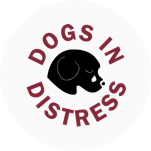Lead & Walking Training Guide
Walking your dog should be a calm, enjoyable experience — not a tug-of-war.
Loose-leash walking teaches dogs to stay focused, relaxed, and safe in the outside world. Whether you’ve adopted a rescue dog or are training a puppy, learning to walk politely on the lead builds trust, confidence, and better behavior overall.
Dogs naturally walk faster than humans and are easily distracted by smells and sights. Pulling often happens because:
They’re excited or anxious.
They’ve learned that pulling gets them where they want to go.
They don’t yet understand what’s expected of them.
The good news: pulling is a learned behavior — and it can be unlearned with patience and positive training.
Before training begins, make sure you have the right equipment:
✅ Harness vs. Collar — Choose a comfortable no-pull harness that doesn’t restrict movement. Avoid choke or prong collars.
✅ Leash Length — Use a 4–6 ft lead for training (not an extendable one).
✅ Treats & Rewards — Bring small, high-value treats like chicken or cheese.
✅ Quiet Environment — Begin in a distraction-free area before moving outdoors.
Start indoors or in your garden.
The Technique: “Be a Tree”
Stand still. Let your dog move around.
The moment the leash goes slack — praise and reward.
If your dog pulls — stop moving. Wait for calm behavior before continuing.
Repeat consistently — your dog will learn that pulling stops progress, while walking calmly moves things forward.
Dogs pull when they’re distracted. Teaching focus helps them pay attention to you instead of the environment.
Try These:
Name Game: Say your dog’s name → when they look at you → reward.
“Watch Me” Cue: Hold a treat near your face and reward eye contact.
Change Direction: Randomly turn around mid-walk; reward your dog for following you. This keeps them tuned in to your movements.
Your dog should walk beside or slightly behind you — not ahead.
Whenever your dog:
Walks with a loose leash,
Checks in visually,
Or ignores distractions…
🎉 Mark it (“Yes!” or clicker) and give a treat by your side.
Over time, gradually reduce treats and use praise, petting, or short play breaks as rewards.
Once your dog is reliable indoors or in your garden:
Go for short outdoor walks in quiet areas.
Reward attention and calm behavior.
Gradually add more distractions — like passing dogs, cars, or people.
If your dog lunges or gets overexcited:
Step back, increase distance, and calmly redirect their attention to you.
Avoid punishment — it increases anxiety and reactivity.
🚫 Yanking or jerking the lead — causes fear, not focus.
🚫 Using retractable leads early on — teaches pulling.
🚫 Training when your dog’s energy is too high — walk after short play or mental enrichment.🚫 Ignoring calm behavior — always reward good choices!
Playlist

7:30

17:34
Fostering
Get Involved
Dogs in Distress is a registered charity. Dogs in Distress Limited is fully compliant with the Charities Governance Code.
RCN NUMBER: 20059491 | CHY NUMBER 16481 | CRO NUMBER 505 799
